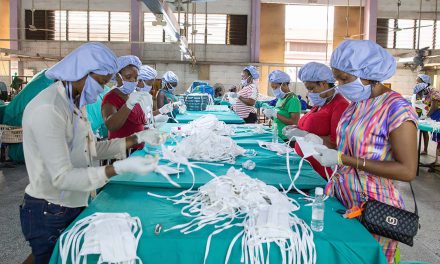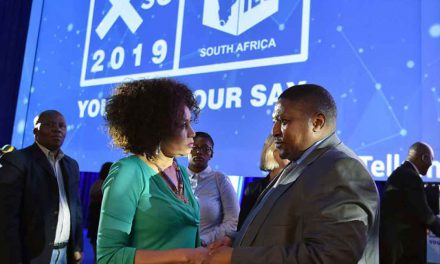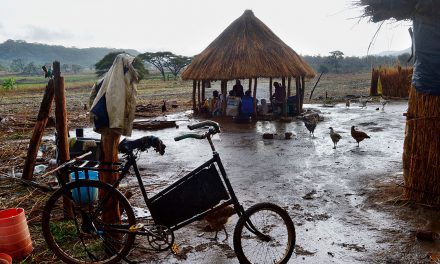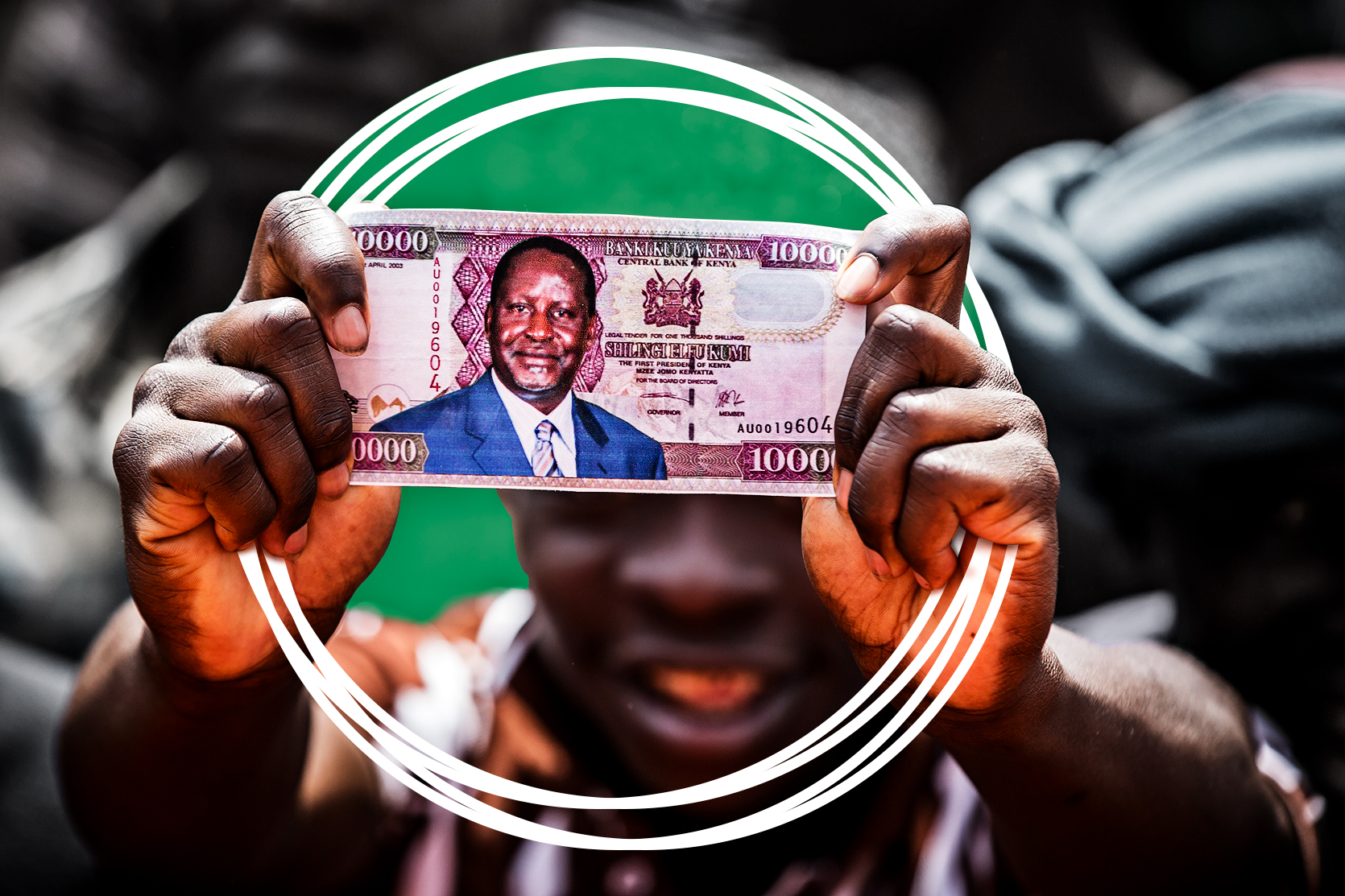December 2023 will mark 16 years since loadshedding became prominent in 2007. What was initially conceived as a temporary measure has become a persistent feature in South Africa – a feature that continues to worsen. One of the biggest consequences of load-shedding is the impact that it has on South Africa’s socio-economic dynamics.
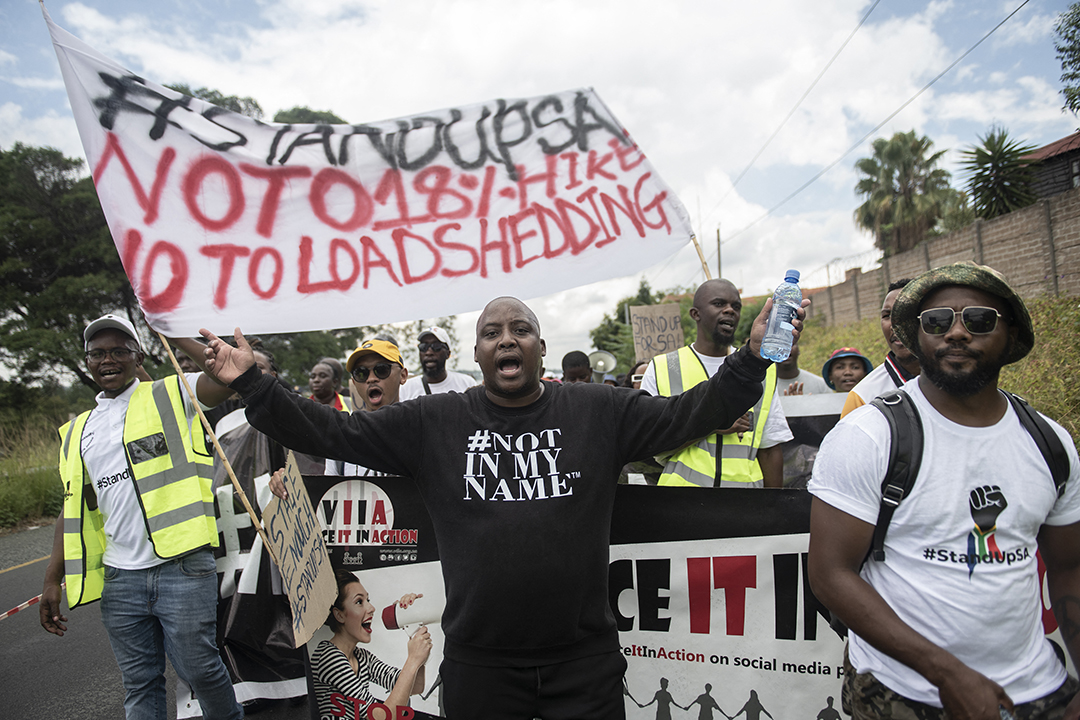
Members of #StandUpSA and #NotInMyName movement march to Eskom Megawatt Park, the headquarters of Eskom power utility company in Johannesburg, on February 2, 2023. Photo: Maria Giulia Trombini/AFP
The socio-economic implications of South Africa’s energy crisis
The energy crisis in South Africa affects every sector and is proving to be costly. It also sets a tight ceiling on economic growth. From a socio-economic perspective, it limits access to essential services and resources and halts business operations – particularly for small-scale and marginalised businesses. This perpetuates existing socio-economic disparities and reverses any gains made in addressing the gap between the rich and poor. It also reduces the quality of life in urban areas.
The country is facing an energy supply crisis and is simultaneously among the top 20 global contributors to greenhouse gas emitters. Eskom is the world’s most polluting power company and in 2021, it was the 14th largest emitter of carbon dioxide in the world. An emerging solution to the crisis is the Just Energy Transition (JET). JET prioritises the shift from the use of carbon-intensive energy consumption to low-carbon renewable energy.
What strides have been taken by the government to address the energy crisis and have these strides been in alignment with the requirements of JET?
Responses to the crisis across provinces
Implemented in 2003, the Free Basic Alternative Energy Policy instructs municipalities to supply indigent households in un-electrified areas with free basic energy. The policy lists paraffin, fire gel, solar home systems, liquid petroleum gel and coal as options. The yearly Non-financial Census of Municipalities (NCFM) indicates that when the policy was introduced, Gauteng was the only province that did not provide free basic alternative energy, whereas Kwa-Zulu Natal provided the most. Moreover, out of the five alternatives, fire gel was the most provided alternative in South Africa, followed by the provision of solar home systems. Though the provision of solar home systems by municipalities has increased from 8 in 2005 to 14 in 2021, there has also been an increase in non-renewable energy like paraffin and fire gel.
The yearly census update indicates that the government is taking strides to address the energy crisis. These alternatives are free, and they allow poor households to access energy for cooking, lighting, and accessing media, thereby allowing them to run their daily lives. It also helps reduce costs in these households.

As the figure illustrates, between 2008 and 2020/21 more municipalities have been providing free basic alternatives with a moderate increase in the provision of solar home systems. The graphic shows that performance differs across the provinces, with North West the only province which does not provide any free basic alternative energy. As of 2020, the Eastern Cape provides the most alternatives whereas the municipalities that provide the most solar home systems are in the Eastern Cape (8) Northern Cape (3), and KZN (3). On the contrary, Mpumalanga no longer provides free alternatives and since 2008, municipalities in KZN have significantly decreased their supply of alternatives.
Worryingly, the NFCM suggests that the supply of non-renewable energy surpasses the supply of renewable energy.
One of the challenges of non-renewable sources like paraffin and fire gel is that they have higher accident risks and significantly contribute to Household Air Pollution (HAP). HAP remains a predominant type of air pollution across Africa. In 2019, air pollution attributed to 1.1 million deaths in Africa – this includes an estimated 697,000 deaths due to HAP.
In South Africa, 600,000 households were in extreme energy poverty in 2018, thus heavily reliant on paraffin for domestic energy. Paraffin failure accounts for approximately 5,000 shack fires every year, 2,000 deaths reported every year, and is responsible for increased cases of paraffin ingestion.
While progress has been made, the government should consider increasing the share of sustainable energy in providing these alternatives. To effectively implement JET, the kind of energy alternatives provided is important.
Key challenges local government faces in implementing JET:
A core focus for JET within the South African context is to provide alternative (preferably renewable, clean) energy sources. This priority comes out of the ongoing energy crisis and pressure to provide energy security to people. Most of the electricity generated by Eskom comes from coal (and some nuclear), which is bought by local municipalities who then distribute it to households. Municipalities and local government therefore play a central role in ensuring that JET is implemented effectively.
However, the actions taken by municipalities have failed to align with this core focus of JET. The map highlights the number of municipalities providing free renewable forms of energy. It shows that only 20 out of the 213 local municipalities provide renewable energy to indigent households. While this is an increase from 2020, the actual units of solar panels provided to indigent households have dropped quite significantly.
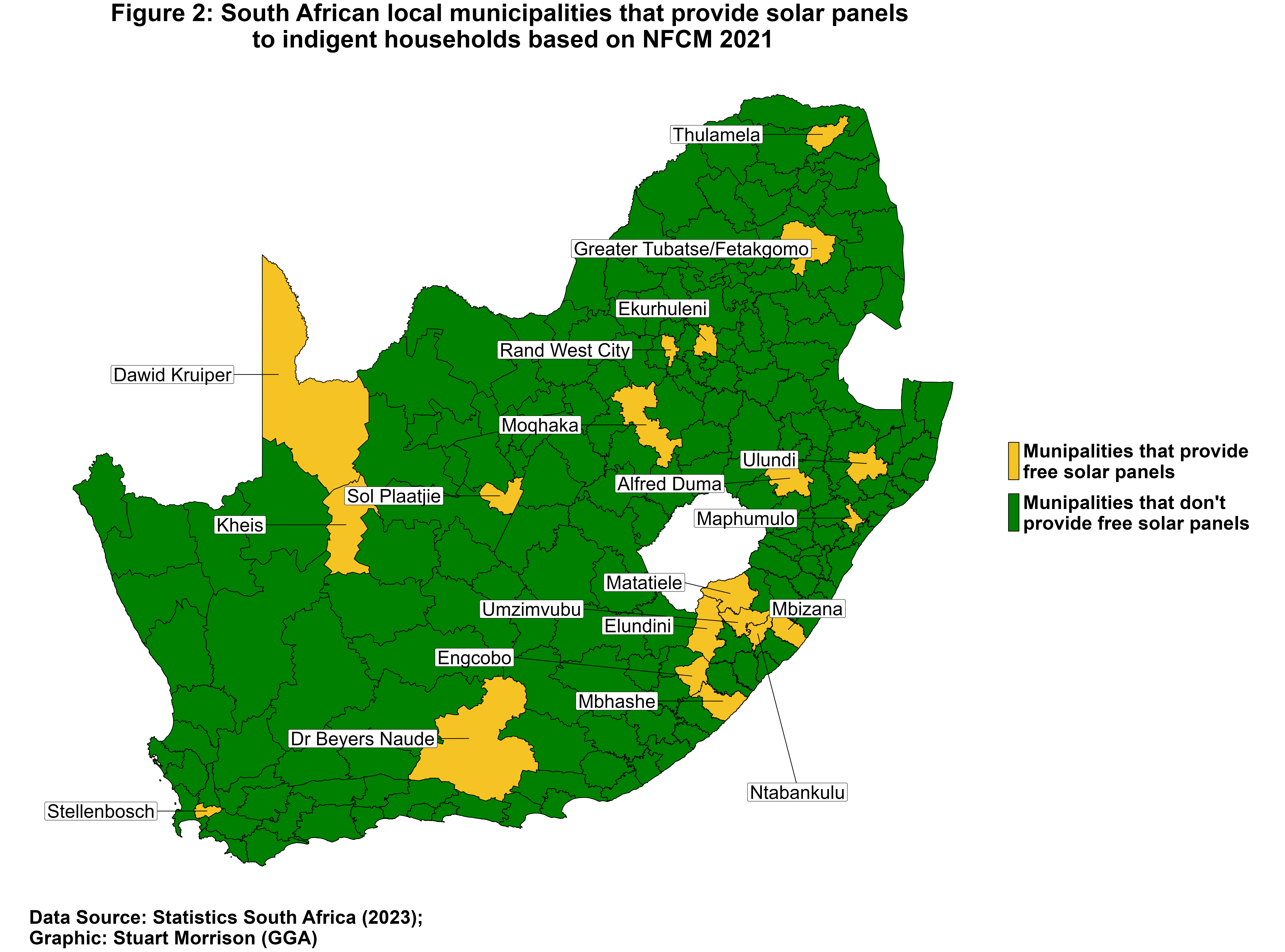
The government’s explanation for this decrease is that many households did not renew their indigent status and were therefore deregistered. Yet, research shows that municipalities were intentionally failing to register poor households.
This is because municipalities are deep in debt to Eskom. In recent years municipalities have incurred more than 63 Billion Rand of debt. As part of the debt relief plan, many municipalities have had to reduce their spending on free services to pay off this debt.
Municipalities generate a large portion of revenue from providing electricity and are further less motivated to provide free renewable energy alternatives to households. It can also help explain why non-renewable forms of energy have increased in recent years as they tend to be cheaper alternatives. As such, because a priority for many municipalities is on staying afloat; aligning their actions with JET is not feasible.
Another key challenge is the lack of cohesion between national and local government, especially when it comes to energy and climate policy.
Several metropolitan municipalities have adopted the Climate Action Plan (CAP), which seeks to reduce carbon emissions and create more climate-resilient cities. However, almost no effort has been made by the national government to coordinate local policies in line with the CAP, limiting the impact that such policies can have across South Africa.
Recommendations
In order to ensure that local government is aligning its actions to address the energy crisis with the JET, there needs to be greater cohesion between national and local government. National government needs to prioritise supporting local municipalities in implementing climate policies that align with the JET framework. While also ensuring that there is uniformity in different municipalities in their approaches to providing renewable energy alternatives.
Furthermore, as part of the JET Investment Plan, 1.48 trillion Rand is targeted to finance JET for the period, 2023-2027. This financing needs to be prioritised towards local municipalities in order to mitigate the budget constraints that limit the ability of municipalities to provide renewable forms of energy to indigent households. This will also allow municipalities to invest in new technologies that are more resilient to the adverse effects of load-shedding.
Lastly, municipalities need to prioritise indigent households in their efforts to address the energy crisis. In doing so, it will allow progress that aligns better with the principles of the JET.



